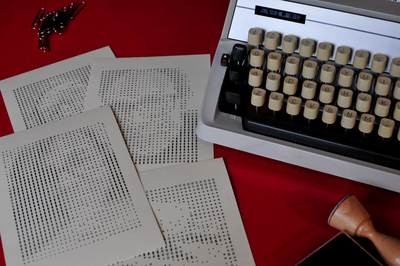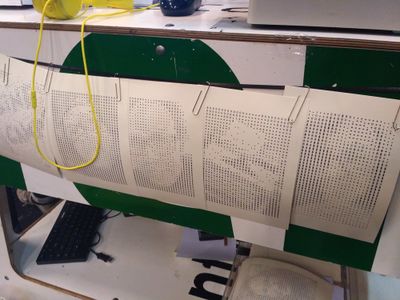Difference between revisions of "Text Images"
| Line 37: | Line 37: | ||
* plain-text image formats: | * plain-text image formats: | ||
** [https://en.wikipedia.org/wiki/X_PixMap#XPM3 X PixMap] (.xpm) | ** [https://en.wikipedia.org/wiki/X_PixMap#XPM3 X PixMap] (.xpm) | ||
** [https://en.wikipedia.org/wiki/Netpbm_format | ** [https://en.wikipedia.org/wiki/Netpbm_format NetPBM] | ||
*** Portable BitMap[1] P1 P4 .pbm 0–1 (white & black) | *** Portable BitMap[1] P1 P4 .pbm 0–1 (white & black) | ||
*** Portable GrayMap[2] P2 P5 .pgm 0–255 (gray scale) | *** Portable GrayMap[2] P2 P5 .pgm 0–255 (gray scale) | ||
*** Portable PixMap[3] P3 P6 .ppm 0–255 (RGB) | *** Portable PixMap[3] P3 P6 .ppm 0–255 (RGB) | ||
Revision as of 11:54, 2 January 2018
Text Images
Description
The following elective will be based on the project Excelfie by design Lucia Dossin, where selfie (images), captured by a digital camera are converted onto plain-text files (ASCII-art). In these text-based images, the sequence of pixels of the captured images is mapped onto corresponding text characters, in order to create text-based rendition of the original bit map image.
We will work towards the implementation of the Excelfie in the Oublication Station, for which we'll use a raspberry Pi, a camera, a screen, headphones, paper and a typewriter.
Announcement text
What are digital (bit-map) images? In their simpler form nothing more but sequence of pixels, each with its color value, organized into lines and rows. Such form of representing image information is uncannily similar to how text is represented digitally: a line-by-line sequence of characters, each with its corresponding value (code point). Can this similarity be used to transform pixel-based images into similar looking images made solely by text? And what happens when we reverse the process and try to get the text-based images into pixels using Optical Character Recognition software?
Organization
ASCII Art
- ASCII & Plain text
- ASCII Art
- Typewriter Art
Digital Images
- bit maps: sequences of pixels
- color depths:
- 1-bit color (2 colors): monochrome, often black and white,
- 2-bit color (4 colors)
- 3-bit color (8 colors)
- 4-bit color (16 colors)
- 5-bit color (32 colors)
- 6-bit color (64 colors)
- 8-bit color (256 colors)
- 8-bit greyscale (256 grey colors): each pixel represents only an amount of light (intensity information)
- 12-bit color (4096 colors):
- 24-bit True color (16777216 colors): 256 shades of each color channel red, green, and blue

